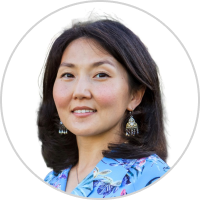Specialists
Years of experience in genetics, laboratory diagnostics and bioinformatics
Up to 10% of breast cancer cases are hereditary.
The most common cause of hereditary breast cancer is a mutation in the BRCA1 or BRCA2 genes. If there is a pathogenic variant in these genes:
Other genes / syndromes associated with an increased risk of BC:
PALB2
CHEK2
ATM: Inheritance of 2 abnormal copies of this gene causes disease called ataxia-telangiectasia. Inheritance of one abnormal copy of this gene is associated with a high risk of breast cancer. The 7271T>G missense mutation increases the lifetime risk of developing breast cancer to 60% by the age of 80 (which is higher than with nonsense mutations, the risk for which is 30-40%). Autosomal recessive forms in offspring are possible.
TP53: Mutations in this gene cause Li-Fraumeni syndrome. People with this syndrome have an increased risk of developing breast cancer, as well as some other cancers such as leukemia, brain tumors, and sarcomas (cancer of the bones or connective tissue).
PTEN: Cowden syndrome is a rare disease that puts people at increased risk of developing both cancer and benign (non-cancerous) breast tumors, as well as neoplasms in the digestive tract, thyroid, uterus, and ovaries.
CDH1: Mutations in this gene cause hereditary diffuse gastric cancer, a syndrome in which people develop a rare type of stomach cancer. Women with mutations in this gene also have an increased risk of invasive lobular breast cancer.
STK11: Defects in this gene can lead to Peutz-Jeghers syndrome. People suffering from this disorder have polyps in the urinary and digestive tract, as well as a higher risk of developing cancers in various parts of the gastrointestinal tract, endometrium, and breast cancer.
If you are at increased risk for breast cancer (for example, because you have a family history of a known genetic mutation, there are a few things you can consider that may help lower your risks of developing breast cancer (or help detect it on the early stage):
The drugs tamoxifen and raloxifene block the action of estrogen in breast tissue. Tamoxifen may be an option even before menopause, while raloxifene is only used for women who are in menopause.
Aromatase inhibitors may also be used in women after menopause.
All of these drugs have side effects, so it is important to understand the possible benefits and risks of taking them.
For a small proportion of women with a very high risk of breast cancer, such as a BRCA gene mutation, surgery to remove the breast (prophylactic mastectomy) may be an option.
One more option may be to remove the ovaries, which are the main source of estrogen in the body. While surgery may reduce the risk of breast cancer, it cannot completely eliminate it and may have its side effects.
For women at increased risk of breast cancer, doctors may recommend careful monitoring:
While this approach does not reduce the risk of breast cancer, it can help detect it on the early stage, when it is easier to treat.
Years of experience in genetics, laboratory diagnostics and bioinformatics
All data is strictly confidential and cannot be passed on to third parties
Results ready in a short time
Extensive control at each stage of testing
Free delivery of biomaterial across Russia
Email info@f-genetics.com for information

Шикеева Амуланг Алексеевна
Врач-генетик, лабораторный генетик Лаборатории First Genetics, к.м.н.

Филатов Павел Николаевич
Врач-онколог, химиотерапевт высшей категории, хирург ГАУЗ «ООКСЦТО» Действительный член Российского общества клинической онкологии (RUSSCO), Ассоциации онкологов России (АОР), профессионального сообщества Меланома Про.